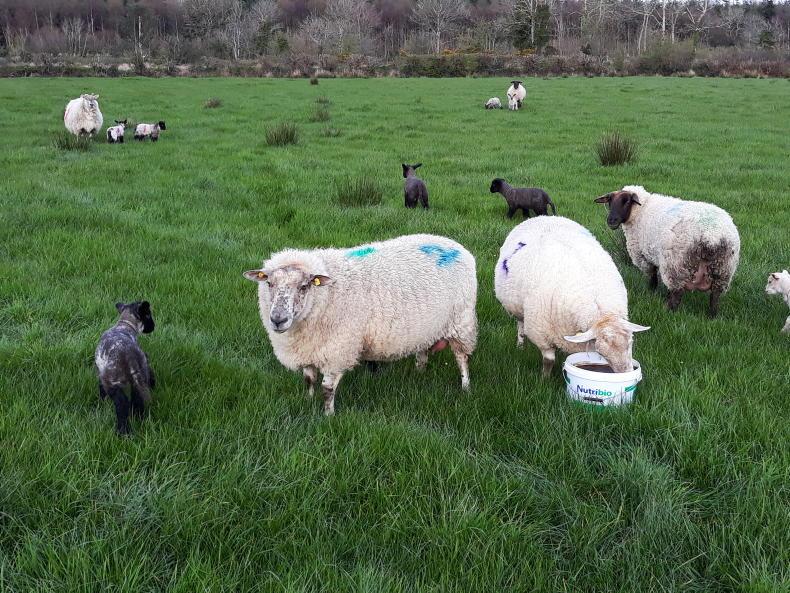Grass tetany: The sharp drop in temperatures and showers have given rise to some cases of grass tetany on farms where the risk is high.
This will remain the case in the coming days, with sharp fluctuations in temperatures when ewes are under nutritional stress, a common trigger for the disease.
Other significant risk factors include ewes grazing swards with a low dry matter content during periods of heavy rainfall.
Conditions like this affect intake and utilisation, and in turn their ability to absorb nutrients from the grass.
Ewes grazing lush grass after a period of rapid growth and high soil potassium levels is another risk, as this interferes with the plant’s ability to take up magnesium from the soil.
Animals struggle to store magnesium, and as such, prevention needs to centre on providing animals with regular supplementation, or enhance the conditions for magnesium absorption. Keep in mind that it will take one to two days for magnesium levels to build and protection to kick in while cover will typically wane from one to three days after magnesium intake ceases or is curtailed.
Offering ewes access to high-mag lick buckets is the most common form of supplementation.
Multiple buckets should be provided if there is a large grazing area while locating buckets close to where sheep congregate will also help encourage higher intake.
Feeding concentrates containing magnesium (ewes require 1g to 2g daily but a higher dose is recommended) will increase magnesium blood levels, while feeding concentrates will also help as it will slow down the rate of digestion and help absorption from forage.
Magnesium bullets are a good source of cover but beware the period of cover is limited to that stated on the product guidelines.
The addition of magnesium to water is less reliable during inclement weather, while pasture dusting with calcined magnesite is possible but is a rare preventative aid used. A combination of preventative measures may be required where there is a particularly high risk.
Cull ewe prices: The cull ewe trade has gained momentum. With soaring input costs the vibrant trade is an avenue to generate cashflow and reduce grass demand. However, if animals are deemed unfit for transport, they are not suitable for slaughter and carcases will be condemned.
Animals must not be transported if they can’t move independently, walk unassisted and remain standing, or where there is a risk of them losing their balance during transport. Pregnant females (sheep or cattle) for whom 90% or more of the expected gestation period has already passed are prohibited from slaughter, as are animals that have given birth in the previous week.
TAMS dates: Tranche 25 of the Targeted Agricultural Modernisation Scheme closes for applications on 8 April.
Tranche 26 opens on 9 April and will close on 1 July 2022.
For farmers hoping to carry out fencing works or make the most of equipment in this season then getting an application submitted before the closing date will cut the waiting time for approval.
As recent tranches of the scheme have approved all eligible applications there is no backlog currently present which reduces the pressure on reducing planned investment costs to enhance the marking score of the application should a selection and ranking process apply.






 This is a subscriber-only article
This is a subscriber-only article









SHARING OPTIONS: